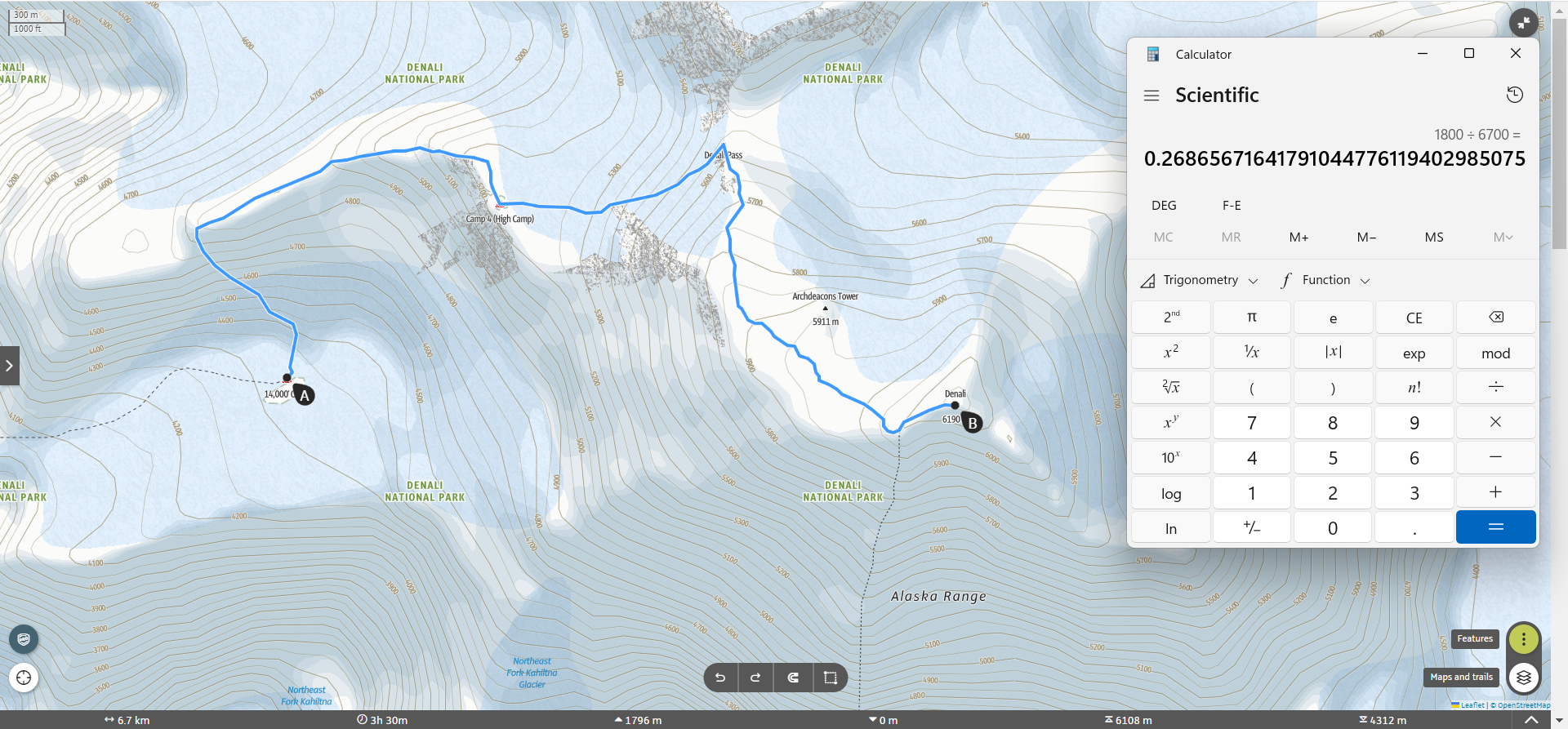@LCB:
Thanks for sharing this, I’d never heard of this podcast before! Some interesting food for thought. Can you give more details on what terrain you have access to locally and how high are your local mountains (if any)? Hard to answer your questions without more details.
I think it would be beneficial to summarise and contextualise some of the pertinent info below for the benefit of anyone who joins this discussion later.
At 22:02 Scott says:
One of the things that I have striven for with athletes I’ve coached, who I know are fit enough, is to go from 14 to the summit and back down in a day. I believve that that’s the most… the safest way to climb that mountain, honestly.
He goes on to explain that most commercial guiding companies establish a camp at 17,000′ (5,182m) because the fitness of the party usually isn’t high enough to make a one-day push from 14,000′ (4,267m) to the summit (20,309’/6,190m) and back down in a day. So, if I understand correctly, the one-day push is not the normal way that the West Buttress route is climbed, and only very fit mountaineers are capable of this.
Scott states that in his example of his one-day push with Colin Haley, they took 4-5 hours to summit from 14,000′. That would equate to a rate of ascent of 400-500m/hour above 4,267m in altitude. For Europeans like me, it’s very roughly analogous to reaching the summit of Mont Blanc from the Tête Rousse hut in 3 hours (this usually takes 6-7 hours for context). He further elaborates that he’s climbed Denali this way several times, including with people who had very little mountaineering experience (albeit cross-country skiers, so still very fit people). Also note that in TftNA, when recounting this story, Scott says that they were going at a conversational pace and chatting the whole way up and down. So, this rate of ascent was within their AeT.
Plotting at the route on Outdooractive, the average gradient for this route appears to be 27%:

So, not a super steep route by any means. With sufficient aerobic capacity and muscular endurance, it certainly seems achievable, although it’d still require a lot of training to reach that level of fitness and it wouldn’t happen in just a few months.

